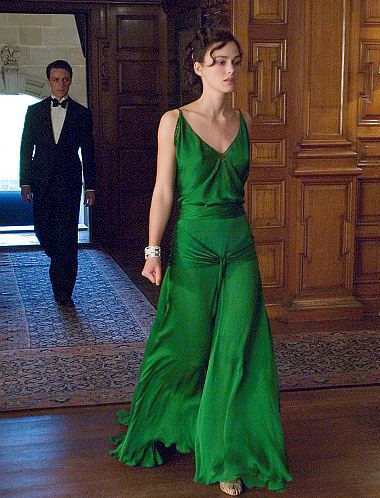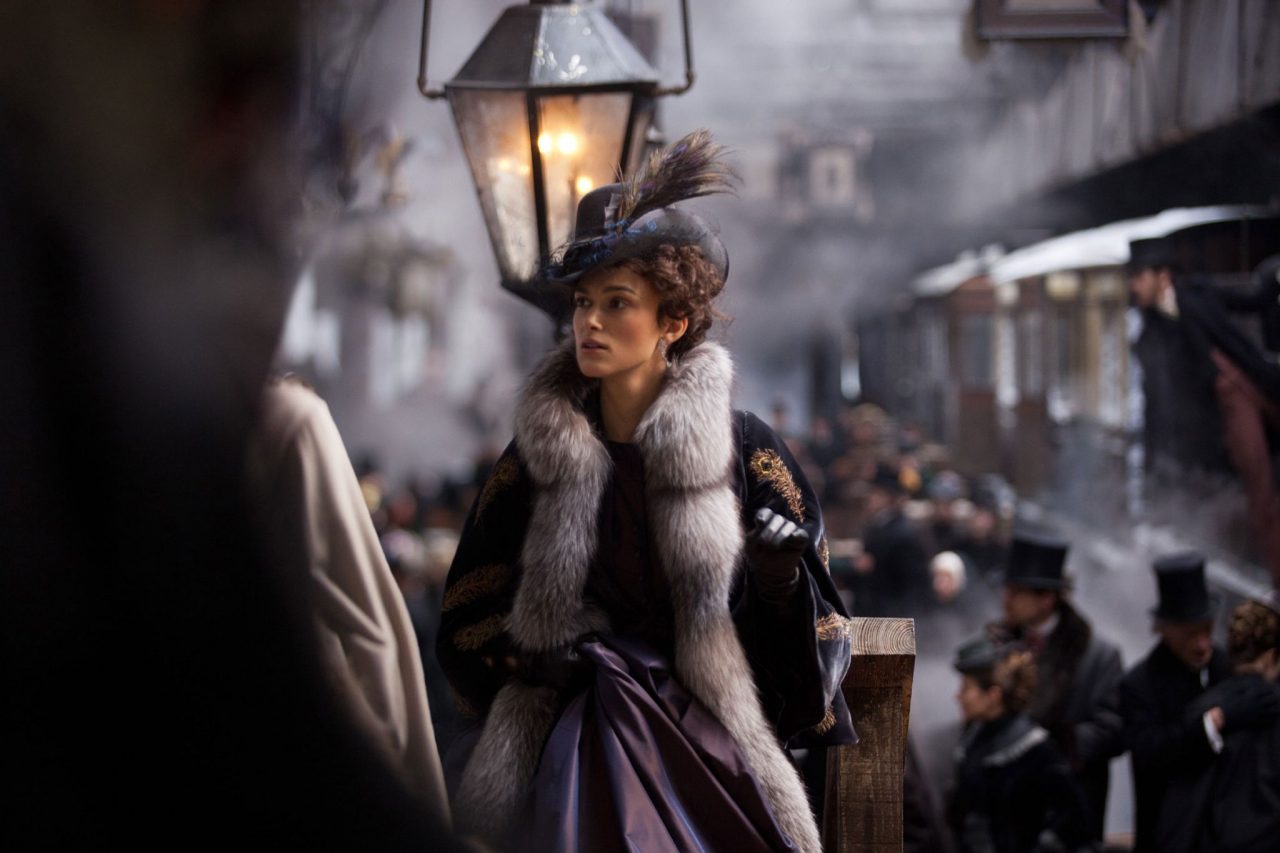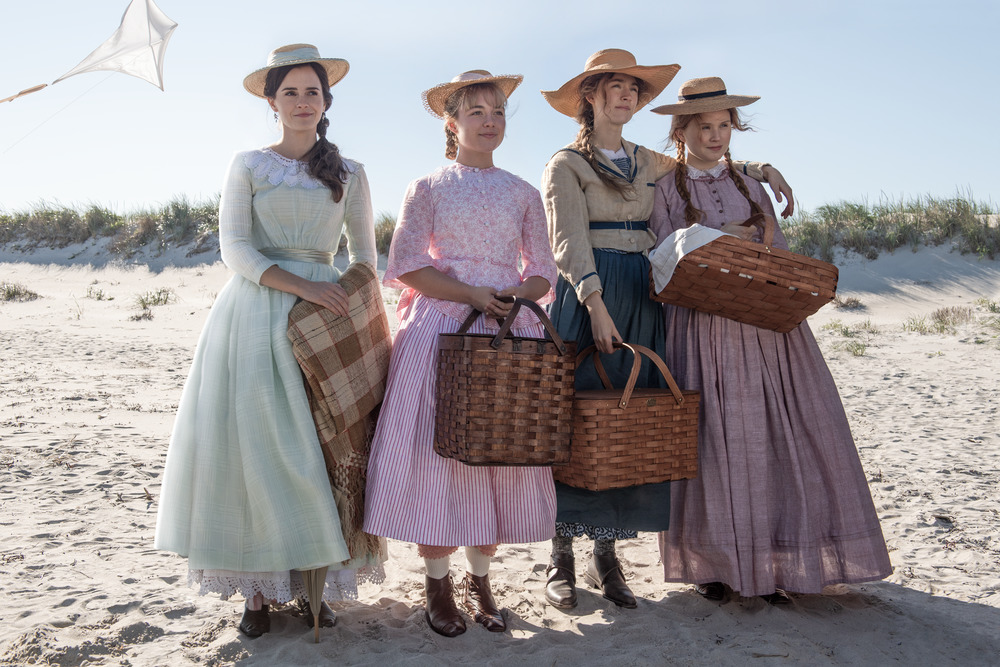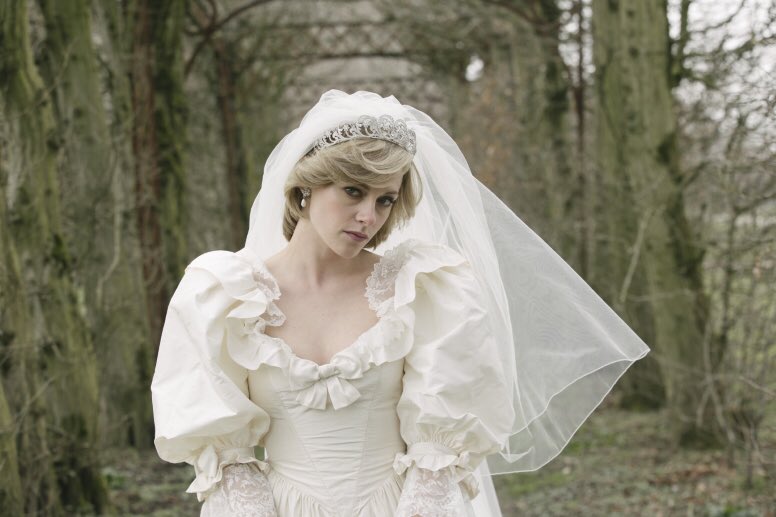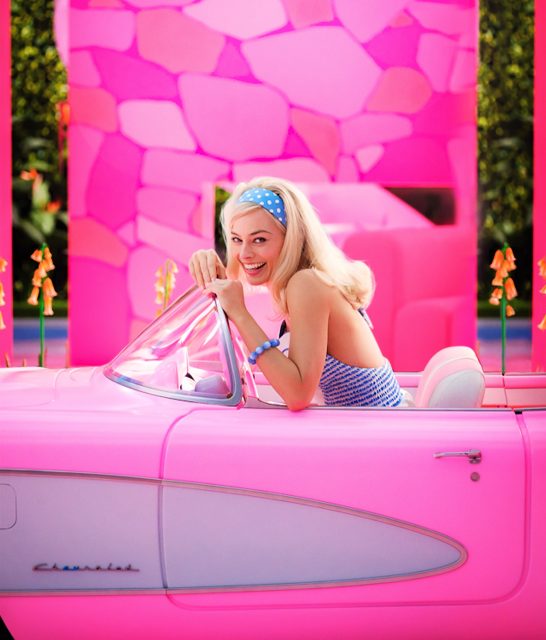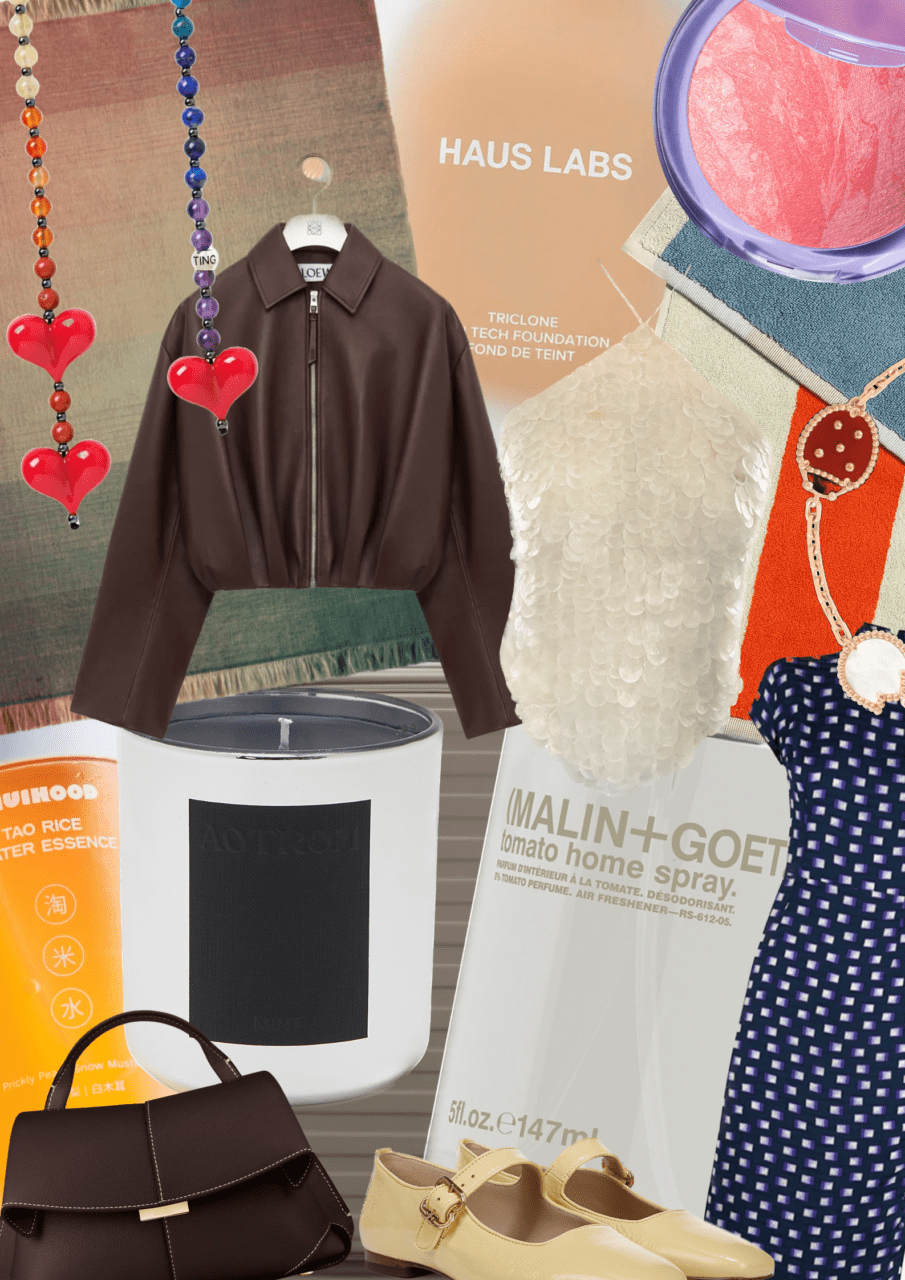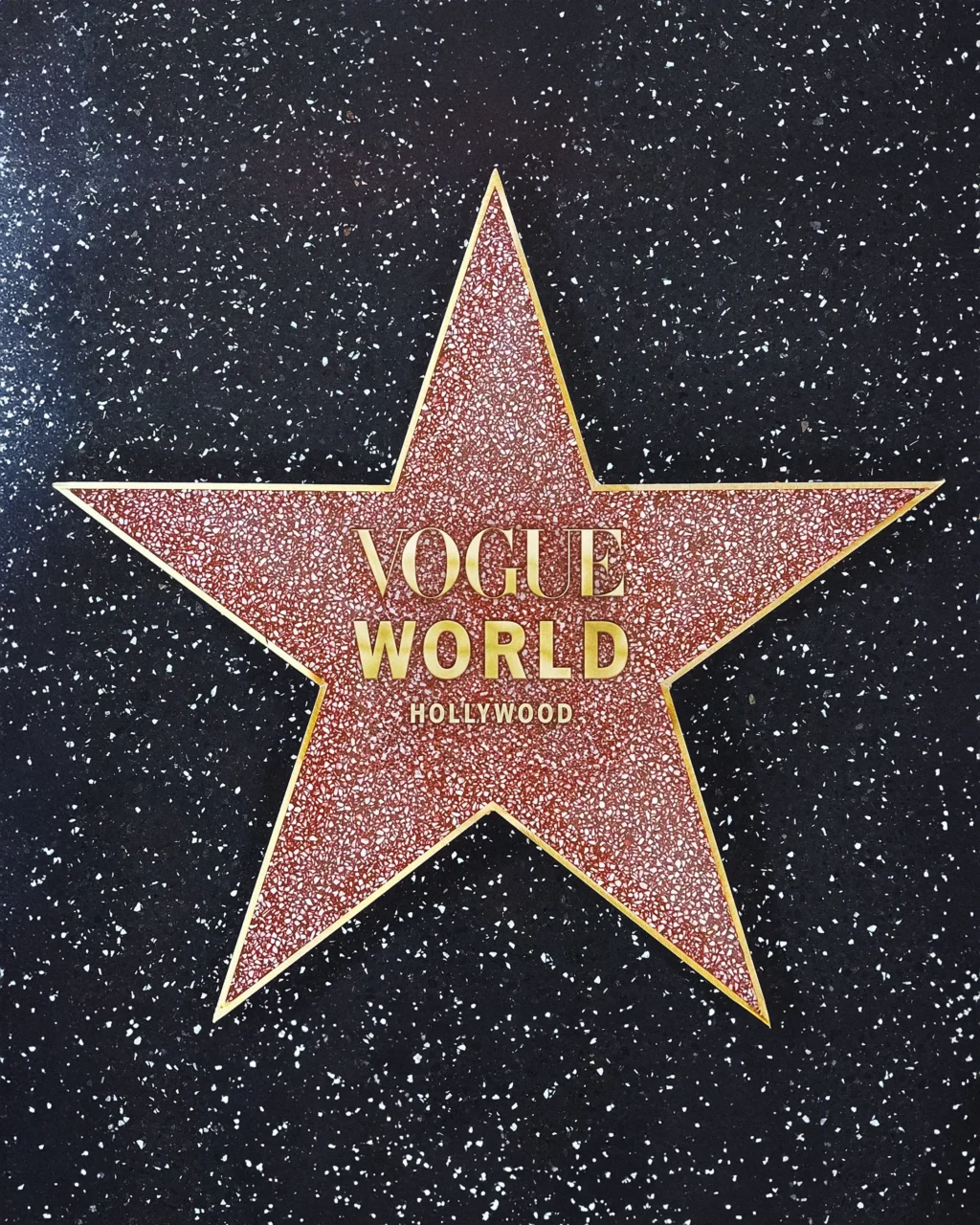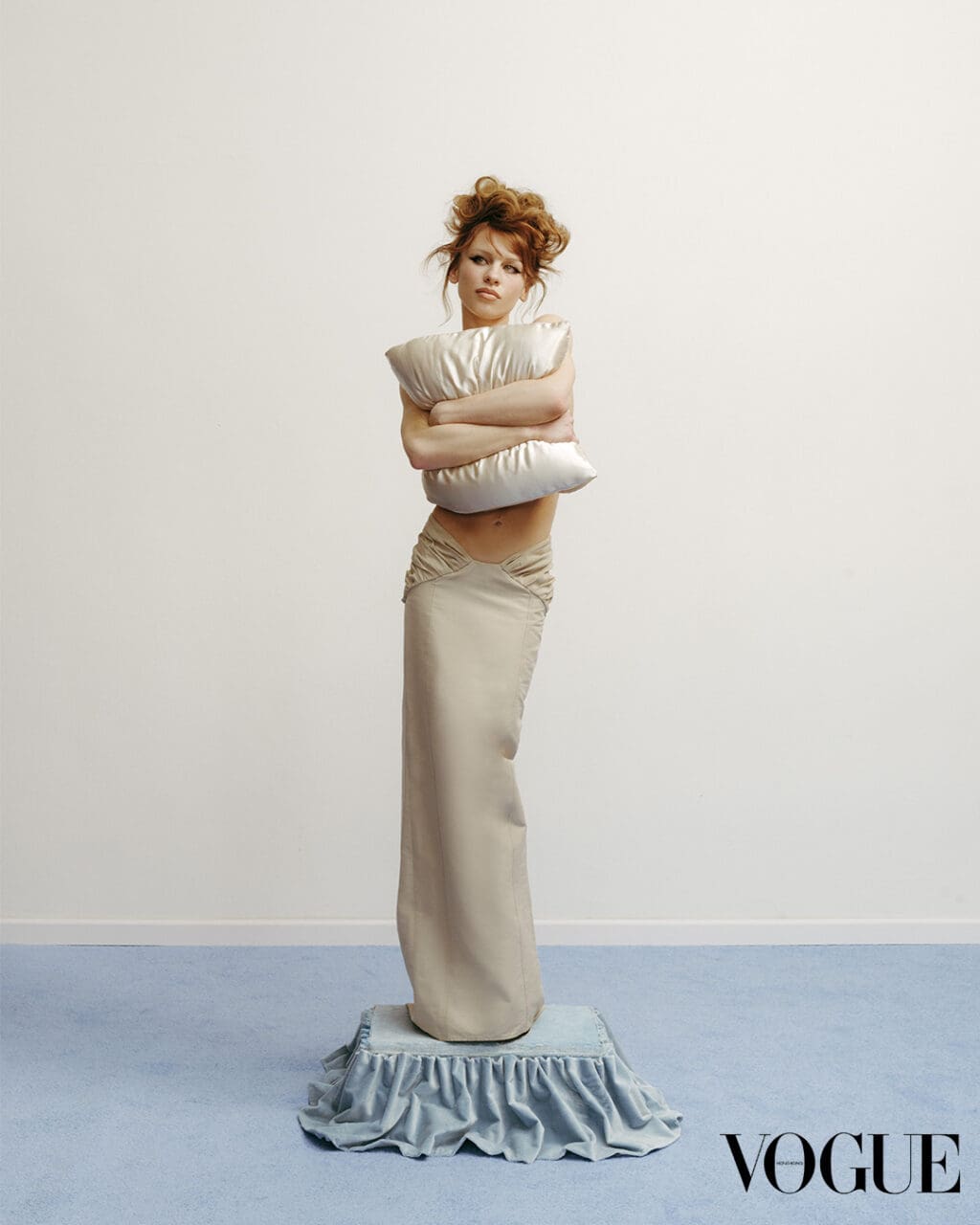If you have even the slightest hint of interest in costume design, the name Jacqueline Durran will likely ring a bell. The British costume designer has come a long way since her days selling vintage clothes at Camden and Portobello Road markets, having won two out of her eight nominations for the Academy Awards and three out of her nine BAFTA nominations for Best Costume Design.
It may come as a shock, then, to hear that even though she did graduate from the Royal College of Art, Durran did not formally study costume or fashion design – her costume design career only began when she took up a junior level job working at a costume house. Since the five fateful years in which she assisted Lindy Hemming, Jacqueline Durran has built a formidable name for herself in the industry, having worked on numerous award-winning projects. These include Joe Wright’s 2005 rendition of Pride & Prejudice, Greta Gerwig’s Little Women, the critically acclaimed Spencer, and, most recently, Barbie, which has broken records as the only film directed solely by a woman to gross US$1 billion in the box office.
If you are looking for deeper insight into her impressive repertoire spanning the past two decades, look no further as we journey through the highlights of the costume designer’s accomplished career thus far.
Vera Drake (2004)
Vera Drake, directed by Mike Leigh (whom Durran continues to work with on various projects after All or Nothing in 2002), follows the story of titular protagonist, Vera Drake (played by Imelda Staunton), who secretly provides abortions for local women with unwanted pregnancies.
Durran’s take on 1950s attire, notably the plain, impoverished look that she gives Staunton, won her her first BAFTA for Best Costume Design. While the designer stays loyal to the period in which the film takes place, she is also unafraid to stray from items strictly belonging to that specific time. As Durran herself said, even two films in the same time period can mean vastly different things. She lends from materials and designs that may have belonged to other intervals of history, but that still visually blend into the aesthetic of the film, giving her costumes a richer depth and fluidity that allow them to breathe life into their characters.
Pride & Prejudice (2005)
The legendary Pride & Prejudice marks the first of Durran’s many Oscar nominations for Best Costume Design. It is also the beginning of her long-standing collaborative relationship with director Joe Wright, as well as one of her three times dressing the beautiful Keira Knightley, an actress known for her convincing portrayals in a number of period pieces.
For the film, Durran goes for a softer, late-18th century look as opposed to a stiffer early-19th century one, with a focus on realism that considers how a real dressmaker in the British Georgian period may have gone about making these clothes. While she acknowledges and respects the importance of the costumes looking authentic historically, she places even greater significance on their emotional authenticity, recognising the visually functional role that costumes play in reflecting a character’s inner feelings and motivations.
Atonement (2007)
Perhaps when mentioning Atonement, one of the first things to come to mind is Cecilia (Keira Knightley)’s green dress, which quickly became a cult hit in its time. The mastermind behind this iconic dress was none other than Durran, who went on to get her second Academy Award nomination for Best Costume Design with this film.
Sleek and subtly alluring, more thought went behind this deceptively simple green dress than you would perhaps expect. Knowing the immense importance that the dress held in Ian McEwan’s novel, Durran had a lot to consider when creating this look. Appearing on the hottest day of the summer, the dress had to be delicate and subtly revealing, preempting the sexual encounter that ensues between Robbie and Cecilia while also capturing the fragility of the moment. To achieve this, Durran looked to the 1930s archives for inspiration, and once again took an anachronistic approach in her employment of a much lower-cut neckline than dresses that period would have strictly allowed, in order to exude the desired aura of subtle sensuality. The specific shade of green was also a decision that could only be made after much deliberation, considering the crucial role that it played in symbolising the tentative, youthfully premature attraction between Robbie and Cecilia as well as Briony’s jealousy.
Anna Karenina (2012)
Anna Karenina won Durran her first Academy Award and second BAFTA, and anyone who has watched the film will understand why. Distinctively anachronistic, as always, Durran even goes as far as to dress Keira Knightey’s Anna in Chanel throughout the film, despite the obvious historical discrepancy of Coco Chanel not even being born yet in the period which the film is set. The decision, however, is a visually effective one, imbuing Anna with her characteristic extravagance.
Indeed, every detail is accounted for in every costume in this film, which takes a highly stylised approach inspired by 1950s couture. While most of the costumes worn by Anna cannot be considered entirely historically accurate, the background characters are dressed in period pieces — another visually functional choice to make Anna stand out as the most striking person in the room. Military cosines were similarly not grounded in historical reality, being an approximation of the uniform rather than an exact replica, and Karenin’s restrained character is similarly echoed by his stiff outfits. For Anna’s iconic black dress, Durran once again turned to 1950s Parisian couture, studying the silhouettes of Balenciaga and Dior to create a vaguely asymmetrical gown that elevates Anna’s existing allure. It is worth noting that everyone else in this scene is dressed in lighter hues — Anna’s black dress is emblematic of her stand against the society surrounding her.
Beauty and the Beast (2017)
Bill Condon’s 2017 live-action remake of Beauty and the Beast may have garnered mixed reviews, but the costumes of the film have only been praised as impeccable reinventions of their classic fairy-tale blueprints. Emma Watson had a clear vision of a modern, emancipated Belle, and Durran worked closely with Watson to bring this vision to life through Belle’s costumes, whilst still aligning with the visuals of the original animation by taking inspiration from 18th century French prints.
A big aspect of Watson’s Belle was her practical nature, and this practicality was reflected in Durran’s costumes: Watson’s Belle substituted ballet flats with utility boots that allowed a higher degree of activity, the bloomers she wore underneath her skirt were an 18th-century-appropriate nod to the modern trouser, and pockets were worn outside to create an even more utilitarian look. While Durran has a tendency to appropriately defy historical constraints in her usual designs, she enriched the historical aspects of Belle’s costumes to create a greater depth and degree of realism, amplifying pre-existing elements of the animation by adding patterns and texture for a Victorian feel. The Beast was similarly dressed in an 18th-century-style aristocratic costume, with a creative twist: Durran revealed that the details on the Beast’s costume were painted and printed rather than embroidered, to create the impression that it had been made for him by the objects in the castle.
For Belle’s iconic yellow gown, camera tests were run to find the perfect shade of yellow, with the right sheen and appropriate effect in light and in shadow. The final product was light and fluid, with less structure and restraint. It was also corset-free to maximise movement, striking a perfect balance between the concept of a “liberated” Belle whilst retaining the original beauty of the gown.
Little Women (2019)
Little Women marked Durran’s first collaboration with Greta Gerwig, and won her another BAFTA and Academy Award. Unlike the 1994 adaptation, Gerwig’s version takes a comparatively liberal approach to Louisa May Alcott’s story, viewing the contemporary reality of the March family through a more progressive lens. This is reflected in Durran’s costume choices for the characters, which abide by a distinctly Victorian aesthetic with a modern twist to echo the free-spirited, convention-subverting nature of the film.
Jo’s corset-free wardrobe was lent an androgynous touch by menswear-inspired vests and blazers, to reflect her rebellious, gender-defying aspirations. Many of her outfits are duplicated in Laurie’s wardrobe to illustrate their shared connection, most notably the yellow and red paisley vest that Jo wears when she rejects Laurie’s proposal — a vest that he, too, wears earlier on in the film. Amy’s costumes, contrarily, are the most Victorian of all the sisters, as seen from the resplendent gowns she starts donning after her departure to Paris with Aunt March. Durran sought particular inspiration from La Mode Illustrée when imitating contemporary trends for the stylish Amy, and she is the only sister to consistently wear the proper corset.
For Meg, on the other hand, Durran turns to the retro-Romantic Gothic revival, choosing a colour palette of rich greens and lavenders to simulate Meg’s yearning for a traditional life as a maternal figure. She wears a frilly pink gown for the ball, strikingly out-of-character in a dress that she borrows from someone else. Meanwhile, Beth is dressed in neutral tones, with a focus on simplicity and a domestic touch. She also shares a lot of pieces with Jo, as though she is wearing her sister’s hand-me-downs, and similarly, Jo wears Beth’s jacket after she passes as a symbol of their bond.
Spencer (2021)
Rather than attempting to replicate Diana’s actual wardrobe in Pablo Larraín’s Spencer, Durran chose to instead dress Kristen Stewart in pieces that were reminiscent of the Princess’ style, incorporating colour-blocking techniques, asymmetrical silhouettes, contrast lapels and more — pieces that she would have worn as opposed to pieces that she did wear.
For the film, Durran worked closely with Chanel, which Stewart is an ambassador for, for approximately one-third of all of the actress’ outfits in the movie. Chanel even replicated archival pieces for the film, as well as creating doubles for any outdoor scenes where the costumes may retain damage. Chanel connotes royalty — the exact thing that Diana struggles to wholly embrace in the film. For Diana, clothing is a symbol of control and restriction, while simultaneously being her very method of rebellion against authority.
Barbie (2023)
One of Durran’s most recent projects would be Greta Gerwig’s Barbie, which has single-handedly propelled Barbiecore into the limelight as this summer’s most popular trend. For the blockbuster, Durran had to consider Barbie’s iconic style alongside an unusual degree of practicality — as dolls, Barbies were always sold with fashion packs for every occasion. In the film, the designer incorporated styles from the 1950s and 60s, imbuing the looks with a retro twist. She also used a palette of summertime pastels, considering the Malibu Beach as a crucial aspect to Barbie Land.
With Margot Robbie as a Chanel ambassador, a majority of the costumes in Barbie were either custom designed or pulled from the Chanel archives, and pieces were recreated in different sizes or colours as necessary for the film. Durran revealed that she and her team only had eleven weeks to create all the costumes, which meant that costumes were produced whilst filming was taking place. Although this must have mounted pressure, it also granted them a lot of flexibility to add new ideas ad hoc, an approach that echoes the freeing, fun way children would dress their own Barbies.
Ken, although possessing significantly less outfit options compared to Barbie, is dressed with sportiness in mind — be it through colourful, retro sportswear, disco boiler suits, or “macho” cowboy looks fit for the patriarchal Kendom (Ryan Gosling even came up with the idea of Ken-branded underwear for the Kens).
For Barbie, on the other hand, Durran impressively recreates almost identical versions of some of the doll’s most iconic looks, including the 1959 Barbie in her black-and-white striped swimsuit, and the 1994 Hot-Skatin’ Barbie in acid neon roller skates. More than just to serve a visually aesthetic purpose, however, costumes throughout the film are also used to indicate Stereotypical Barbie’s growth as she evolves from a plastic doll to a multi-dimensional human, from her bright pink ensembles in the beginning to the yellow drape-cut dress she wears near the end, culminating in a final shot of her in Birkenstock as she steps into the gynaecologist’s office.
Editor
Audrey MiuCredit
Lead Image via IMDb


